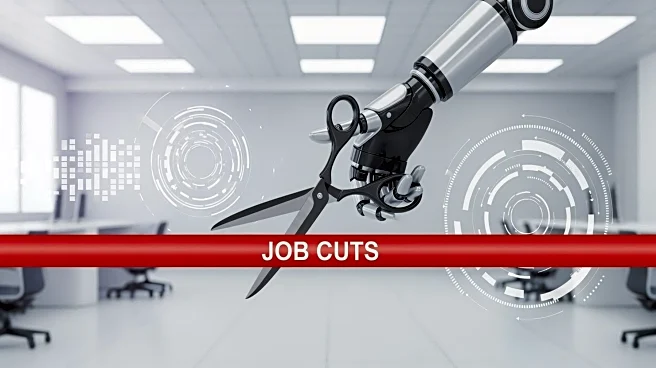What's Happening?
Chief financial officers (CFOs) are preparing for the 2026 budget cycle with a focus on balancing growth ambitions and cost management, according to a recent survey by Gartner. The survey, which included
142 CFOs and senior finance leaders, revealed that 64% plan for their selling, general, and administrative (SG&A) budgets to grow more slowly than their revenue growth rate. This indicates a strong intention to contain overhead costs while still striving for revenue expansion. A significant number of CFOs are leveraging SG&A expense discipline as a primary strategy to drive operating expense savings, with 42% pursuing savings of 3% to 5% of overall operating expenses. The survey also highlighted that CFOs are focusing on areas where technology, automation, or process redesign can lead to efficiency gains, such as human resources, corporate IT, and legal and compliance functions. The increased use of artificial intelligence is expected to result in job losses, with 42% of CFOs anticipating AI-driven headcount reductions.
Why It's Important?
The strategic shift towards AI-driven cost management reflects a broader trend in the corporate world where technology is increasingly used to enhance efficiency and reduce costs. This move could have significant implications for the U.S. labor market, particularly in support functions like HR and IT, where job reductions are anticipated. While this may lead to short-term job losses, it also underscores the growing importance of AI and automation in business operations. Companies that successfully implement these technologies could gain a competitive edge by improving productivity and profitability. However, the transition may also require workforce reskilling and adaptation to new roles, impacting employment patterns and potentially widening the skills gap in the labor market.
What's Next?
As CFOs implement these AI-driven strategies, businesses may need to navigate the challenges of workforce transition and potential resistance to change. Companies might invest in training programs to upskill employees, ensuring they can adapt to new technologies and roles. Additionally, the focus on product-mix optimization suggests that businesses will continue to refine their offerings to maintain profitability. This could lead to shifts in market dynamics as companies prioritize higher-margin products. Stakeholders, including employees, investors, and policymakers, will likely monitor these developments closely, assessing their impact on employment and economic growth.












